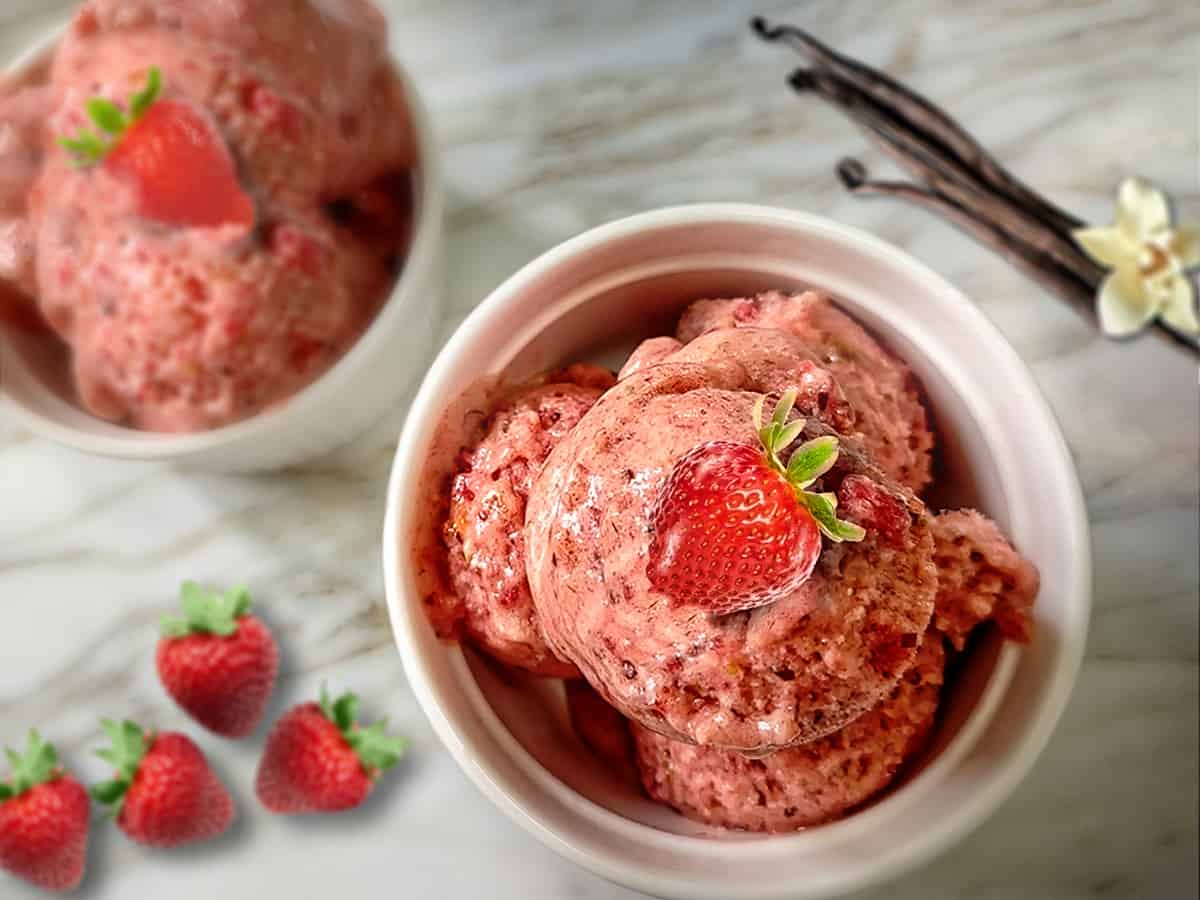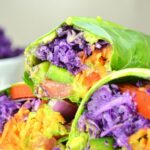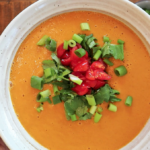Dive into the deliciously cool world of homemade raw vegan ice cream! Forget artificial ingredients and icy textures; this guide unveils the secrets to crafting creamy, vibrant, and intensely flavorful frozen desserts using only nature’s finest ingredients. From selecting the ripest fruits and the creamiest nuts to mastering freezing techniques that prevent dreaded ice crystals, we’ll equip you with the knowledge and recipes to create an array of delectable vegan ice cream masterpieces right in your own kitchen. Prepare to tantalize your taste buds with a journey into refreshing, guilt-free indulgence.
This comprehensive guide explores diverse recipes, showcasing the versatility of raw vegan ingredients. We’ll explore the nuances of texture, from luxuriously smooth cashew-based creations to the lighter, fruitier delights of banana or avocado ice creams. Learn how to subtly adjust your technique to achieve your desired consistency – whether you prefer a dense, scoopable treat or a softer, more sorbet-like texture. We’ll also delve into inventive flavor combinations and explore the possibilities of incorporating exciting add-ins, transforming your ice cream into a personalized culinary experience.
Ingredient Selection and Preparation

Creating luxuriously smooth and flavorful raw vegan ice cream hinges on selecting and preparing your ingredients with meticulous care. The quality of your base ingredients directly translates to the final product’s texture and taste. Using ripe, high-quality produce ensures a naturally sweet and intensely flavorful ice cream, minimizing the need for added sweeteners.
The preparation methods for each ingredient are equally crucial. Proper techniques, such as soaking nuts, enhance their creaminess and digestibility, resulting in a richer, more enjoyable ice cream experience. The following sections detail the optimal approaches for ingredient selection and preparation.
Base Ingredients and Substitutions
The foundation of most raw vegan ice creams lies in a creamy base, often derived from nuts, seeds, or frozen bananas. These ingredients provide the necessary texture and richness. However, substitutions exist for those with allergies or preferences.
- Cashews: Soak raw cashews in hot water for at least 30 minutes, or up to several hours, to soften them significantly, leading to a smoother, creamier texture. Imagine the cashews plumping up, their edges softening, becoming almost buttery to the touch. This process is essential for achieving a velvety texture in your ice cream.
- Almonds: Similar to cashews, soak almonds for at least 30 minutes to improve their creaminess and reduce bitterness. The soaking process helps to break down the enzymes that contribute to the slightly bitter taste of raw almonds, leaving you with a more palatable and creamier result.
- Macadamia Nuts: Macadamia nuts offer a naturally sweet and rich flavor. Soaking isn’t strictly necessary but can enhance their creaminess. The creamy, almost buttery texture of macadamia nuts lends itself beautifully to ice cream, creating a decadent and luxurious treat.
- Sunflower Seeds: A good substitute for those with nut allergies, sunflower seeds provide a slightly nutty flavor and a pleasant creaminess when blended thoroughly. Their subtle, earthy flavor profile adds a unique dimension to the ice cream, offering a lighter alternative to nut-based recipes.
- Frozen Bananas: A staple in many vegan ice cream recipes, frozen bananas provide sweetness and a naturally creamy texture, often requiring minimal additional ingredients. Picture perfectly ripe bananas, frozen solid, their yellow flesh transformed into a frosty, creamy consistency that easily blends into a smooth ice cream base.
Sweeteners and Flavor Enhancers
While many fruits provide natural sweetness, additional sweeteners are sometimes needed. The choice of sweetener impacts the final flavor profile.
- Dates: Medjool dates are a popular choice, offering a rich caramel-like sweetness and a naturally thick consistency. Imagine the intensely sweet, caramel-colored flesh of a Medjool date, adding both sweetness and texture to the ice cream.
- Maple Syrup: A refined option offering a subtle sweetness and a slightly more liquid consistency. A touch of maple syrup adds a complex sweetness and a hint of warmth to the ice cream, complementing various flavor profiles.
- Agave Nectar: Provides a mild sweetness with a slightly thinner consistency than maple syrup or date paste. The liquid consistency of agave nectar ensures a smooth blend in the ice cream mixture, while its mild sweetness allows other flavors to shine.
Fruit Preparation
The preparation of fruits significantly influences the final flavor and texture of the ice cream. Using ripe, high-quality fruits is paramount for optimal results.
Most fruits simply need to be thoroughly washed and chopped before blending. For particularly fibrous fruits, removing the skins or seeds may improve the final texture. Consider the vibrant colors and textures of the fruits; imagine the juicy sweetness of perfectly ripe berries, or the creamy texture of mango, blending together to create a delightful frozen treat. The use of ripe fruit ensures a naturally sweet and flavorful ice cream, reducing the need for added sweeteners and enhancing the overall sensory experience.
Basic Recipe Variations
Raw vegan ice cream offers a delightful canvas for culinary creativity. The fundamental principles remain consistent across various recipes, but the choice of primary ingredient significantly impacts the final texture and flavor profile. Exploring different base ingredients unlocks a world of unique taste experiences.
Cashew-Based Raw Vegan Ice Cream
This recipe utilizes cashews for its creamy, rich texture. Soaking the cashews beforehand is crucial for achieving optimal smoothness. The resulting ice cream possesses a subtly sweet, nutty flavor that complements a variety of mix-ins. Imagine a luxuriously smooth, ivory-colored ice cream, its texture reminiscent of a high-quality dairy alternative, yet completely plant-based. The subtle cashew flavor lends itself well to both simple and complex additions, from vanilla bean to dark chocolate swirls.
Avocado-Based Raw Vegan Ice Cream
Avocado provides a surprisingly creamy base for this vibrant green ice cream. Its naturally rich and buttery texture lends itself well to creating a decadent dessert. The flavor is less pronounced than cashew, acting more as a neutral backdrop for other ingredients. Picture a vibrant, deep green ice cream, its texture dense and velvety, almost like a frozen mousse. The subtle avocado flavor allows bolder additions, such as lime zest and mint, to shine through, creating a refreshing and unique experience.
Banana-Based Raw Vegan Ice Cream
Bananas offer a naturally sweet and slightly creamy base for this recipe. Frozen bananas are the key to achieving a soft-serve consistency. This ice cream is naturally sweeter than the cashew or avocado versions and lends itself well to fruity additions. Envision a pale yellow ice cream, its texture light and fluffy, akin to a frozen banana smoothie. The inherent sweetness of the banana allows for a simple recipe with minimal added sweeteners, and it pairs well with berries and other tropical fruits.
Comparative Analysis of Texture and Flavor Profiles
The three recipes, while all resulting in delicious raw vegan ice cream, offer distinct textural and flavor experiences. The cashew-based ice cream provides the richest, creamiest texture, with a subtle nutty flavor. The avocado-based version boasts a similarly creamy texture but with a more neutral flavor profile. The banana-based ice cream, while creamy, is lighter and fluffier in texture and boasts a naturally sweet, banana flavor. The choice of base ingredient fundamentally alters the sensory experience, allowing for diverse culinary explorations.
Nutritional Comparison
The following table provides a general comparison of the nutritional content per serving (approximately 1 cup) for each recipe. Note that the exact nutritional values will vary depending on the specific ingredients and quantities used. These values are estimates based on common ingredient profiles.
| Nutrient | Cashew-Based | Avocado-Based | Banana-Based |
|---|---|---|---|
| Calories | ~300 | ~250 | ~200 |
| Fat (g) | ~20 | ~15 | ~5 |
| Carbohydrates (g) | ~20 | ~25 | ~40 |
| Protein (g) | ~5 | ~2 | ~3 |
| Fiber (g) | ~5 | ~10 | ~5 |
Recipe and Step-by-Step Creation
This section details the creation of a vibrant, refreshing raw vegan mango-coconut ice cream. The process is surprisingly simple, requiring minimal equipment and yielding a luxuriously creamy result that rivals traditional ice cream. We’ll focus on achieving the perfect texture and showcasing the natural sweetness of the ingredients.
Mango-Coconut Raw Vegan Ice Cream Recipe
This recipe provides a delicious and straightforward method for creating a creamy, naturally sweet mango-coconut ice cream. The key is to use ripe, flavorful mangoes and high-quality coconut milk for the best taste and texture. The process is designed to be simple and easily adaptable to other fruits and flavors.
- Ingredients:
- 1.5 cups frozen ripe mango chunks (about 2 large mangoes)
- 1 can (13.5 oz) full-fat coconut milk, refrigerated overnight
- 1/4 cup unsweetened shredded coconut
- 2 tablespoons maple syrup (or agave nectar, to taste)
- 1 teaspoon vanilla extract
- Pinch of sea salt
Before beginning, ensure your mangoes are fully ripe and frozen for at least 4 hours. Refrigerating the coconut milk overnight allows the cream to separate from the water, resulting in a richer, creamier ice cream. The frozen mangoes will add a delightful icy texture to the final product.
Step-by-Step Ice Cream Creation
This section Artikels the process of making the mango-coconut ice cream, step-by-step. Each step is crucial in achieving the desired texture and flavor profile. Pay close attention to the consistency changes at each stage.
- Scoop and Blend: Begin by scooping the frozen mango chunks into a high-speed blender. The mango chunks will be a vibrant orange-yellow, solid and icy. Add the thick, creamy portion of the refrigerated coconut milk (scoop out the solid cream, leaving the watery liquid behind). The coconut cream will be a stark white, thick and almost solid in texture. Add the shredded coconut, maple syrup, vanilla extract, and sea salt. The mixture at this point will appear a pale orange-yellow, thick and slightly chunky due to the frozen mango.
- Blend Until Smooth: Blend the mixture on high speed for 2-3 minutes, until completely smooth and creamy. Scrape down the sides of the blender as needed. The texture will transition from chunky to completely smooth, creating a vibrant, uniform orange-yellow color. The consistency will be thick and luscious, resembling a very thick milkshake.
- Chill and Serve (Optional): For a firmer consistency, transfer the mixture to a freezer-safe container and freeze for at least 2-3 hours, or until firm. This step is optional as the ice cream is already delicious immediately after blending. After freezing, the ice cream will be firmer, holding its shape better, and taking on a slightly more solid texture while maintaining its creamy nature. The color will remain vibrant.
Creating raw vegan ice cream at home is more than just a recipe; it’s an exploration of textures, flavors, and the boundless creativity of plant-based cuisine. By understanding the principles of ingredient selection, preparation, and freezing techniques, you unlock a world of possibilities, crafting bespoke frozen desserts tailored to your palate. So, gather your ingredients, embrace the process, and embark on a journey of delicious experimentation. The creamy, refreshing reward awaits—a testament to the simple joy of homemade, healthy, and utterly delightful raw vegan ice cream.
Essential FAQs
Can I use frozen fruit?
While fresh fruit is ideal, you can use frozen fruit. Just ensure it’s completely thawed and any excess liquid is drained before blending to avoid a watery consistency.
How long does raw vegan ice cream last?
Properly stored in an airtight container in the freezer, raw vegan ice cream can last for up to 2-3 weeks. However, its flavor and texture might slightly degrade over time.
What if my ice cream is too icy?
This usually indicates insufficient blending or improper freezing. Ensure your ice cream base is completely smooth before freezing and consider using a high-quality ice cream maker for optimal results. Also, avoid opening the freezer frequently during freezing.
Can I make this ice cream without an ice cream maker?
Yes! While an ice cream maker provides a smoother texture, you can freeze the mixture in a shallow container, stirring every hour for the first few hours to break up ice crystals. This method will result in a slightly icier texture.


